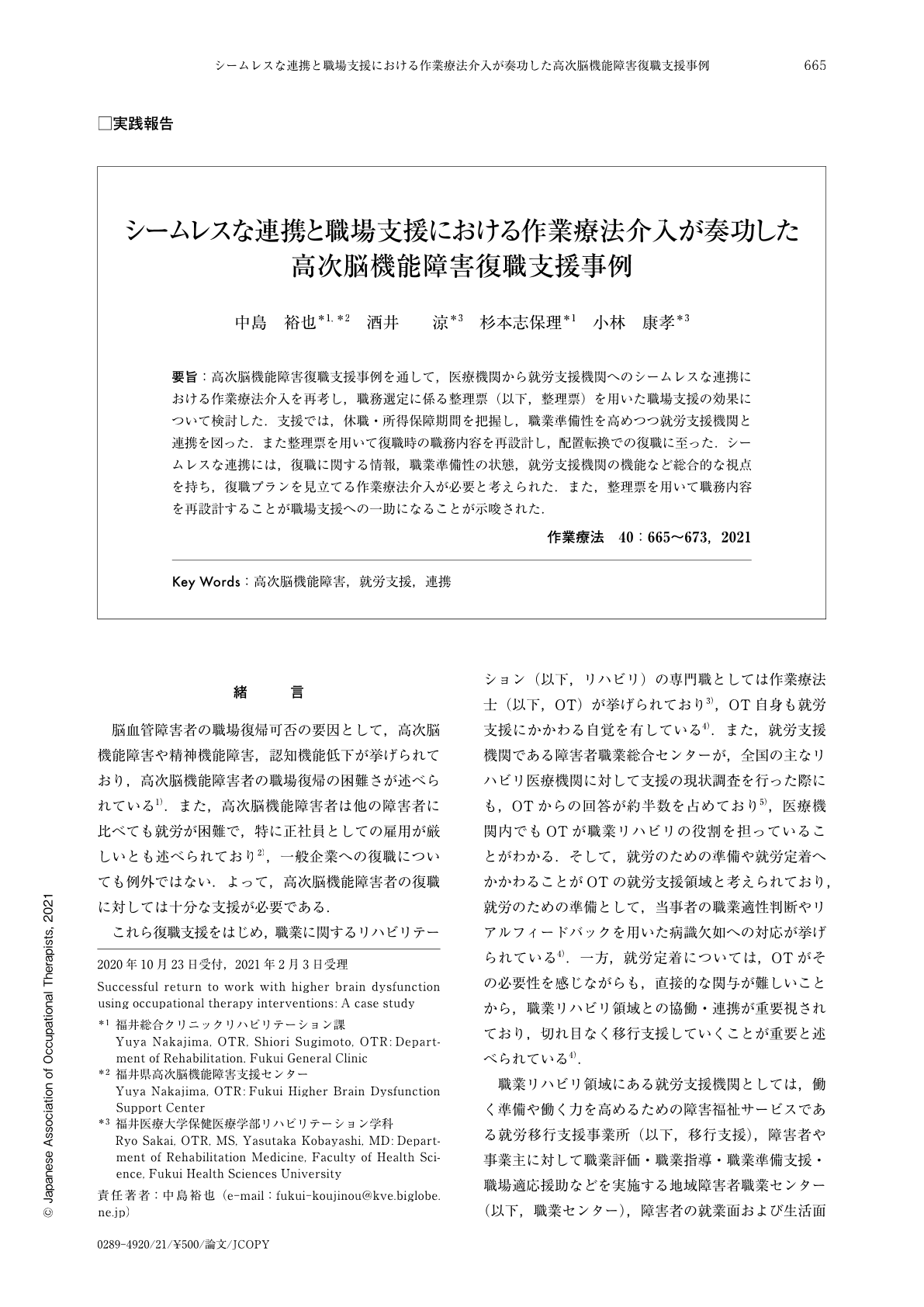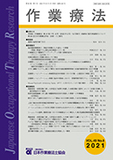Japanese
English
- 販売していません
- Abstract 文献概要
- 1ページ目 Look Inside
- 参考文献 Reference
- サイト内被引用 Cited by
要旨:高次脳機能障害復職支援事例を通して,医療機関から就労支援機関へのシームレスな連携における作業療法介入を再考し,職務選定に係る整理票(以下,整理票)を用いた職場支援の効果について検討した.支援では,休職・所得保障期間を把握し,職業準備性を高めつつ就労支援機関と連携を図った.また整理票を用いて復職時の職務内容を再設計し,配置転換での復職に至った.シームレスな連携には,復職に関する情報,職業準備性の状態,就労支援機関の機能など総合的な視点を持ち,復職プランを見立てる作業療法介入が必要と考えられた.また,整理票を用いて職務内容を再設計することが職場支援への一助になることが示唆された.
We present a case which favors returning to work despite higher brain dysfunctions such as attention disorders, memory disorders, and nerve fatigue. We believe that occupational therapy interventions which incorporate seamless cooperation from medical institutions and job assistance agencies will be beneficial to such patients. We examined the effect of workplace support using a sheet for job assistance. To do this, we analyzed the periods of both absence and income security and collaborated with job assistance institutions while simultaneously improving vocational readiness. In addition, training was provided before returning to work, and duties were redesigned based on the job assistance sheet. The patient returned to work with a change in his job tasks. Occupational therapy intervention was necessary to formulate a reinstated plan from a comprehensive perspective regarding information on returning to work, vocational readiness, job assistance, and the functions of job assistance agencies. We also found that redesigning duties using the job assistance sheet would help support the workplace.

Copyright © 2021, Japanese Association of Occupational Therapists. All rights reserved.


